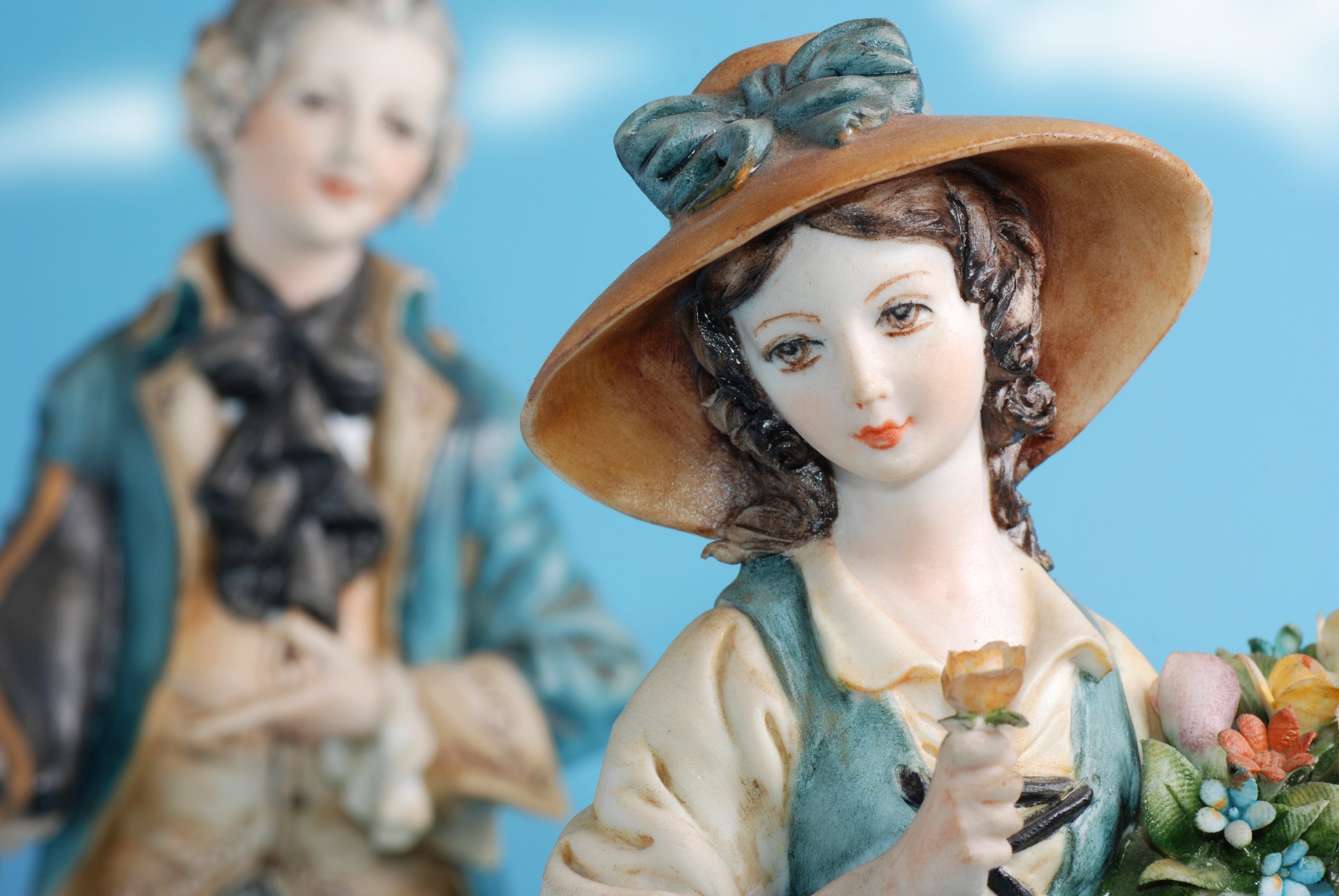Dear Readers,
March…the third month of the year has 31 days and is short for “Martius mensis”, month of Mars. In Roman mythology, Mars was the god of war and agriculture. Nerio, a minor Roman goddess was his wife. Jupiter (Zeus), the supreme Roman god of the skies, rain and weather was his father. Juno (Hera) goddess of marriage and daughter of Saturn was his mother.
March-Marzo has many dates with an “Italian Connection” but first:
Easter bunny
Easter bunny
Buona Pasqua ! Easter Sunday is March 31 this year. Prior to A.D. 325, Easter was variously celebrated on different days of the week including Friday, Saturday and Sunday. In that year, the Council of Nicaea was convened by emperor Constantine. It issued the Easter Rule which states that Easter shall be celebrated on the first Sunday that occurs after the first full moon on or after the vernal equinox.
It does not always occur on the same date as the astronomical full moon. The ecclesiastical “vernal equinox” is always on March 21. Therefore, Easter must be celebrated on a Sunday between the dates of March 22 and April 25.
***
D.H. Lawrence, 1885-1930, the controversial English novelist and poet, “Lady Chatterley’s Lover”, “Women in Love”, died of tuberculosis in Italy, March 2, 1930.
***
The Star-Spangled Banner officially became America’s National Anthem on March 3, 1931. Italian-Americans stood proudly to sing it, especially in 1936 while watching Joe DiMaggio, newly hired rookie, playing for the New York Yankees at their namesake stadium.
Antonio Meucci, born in Florence, applied for a patent, for what was to be the telephone in 1871. Alexander Graham Bell applied for a patent in 1876 and Edison’s carbon refinement is dated 1877. Italians in Italy and Italian Americans felt they were “robbed” after Bell prevailed in American Supreme Court litigation (because Meucci’s provisional patent expired in 1873) therefore they will not be celebrating Bell’s March 4, 1847 birthday anniversary.
Pier Paolo Pasolini, Italian film director, “Decameron”, “Arabian Nights”, poet, novelist “Ragazzi di vita”, was born March 5, 1922 in Bologna. Police arrested a seventeen-year-old male, after Pasolini was found murdered on the outskirts of Rome in 1975. As a young writer Pasolini described the Friulan peasantry of his childhood as a world of uncorrupted Christianity and innocence. He became anti-fascist by way of his fascist father and a communist later.
Michelangelo Buonarroti, born March 6, 1475 near Florence, was an artist, sculptor, architect and poet. He painted “The Creation of Man” and some of the most beautiful paintings in the world, on the ceiling of the Sistine Chapel in Rome. His status of David and Moses are masterpieces in marble and his dome of St. Peter’s established him as one of Italy’s foremost architects. He died in 1564, and was almost ninety years old, an exceptional age for the time.
***
Anna Magnani, internationally celebrated Italian film star was born March 7, 1908, to moderately prosperous Italian immigrants in Alexandria, Egypt, but since her early characterizations had made her the emotional symbol of Italian peasantry and proletariat, her middle-class beginnings were de-emphasized. Divorced from Italian film director Goffredo Alessandrini in 1943, she worked as a bit actress in films and on stage in order to pay the enormous medical expenses for her polio stricken son Luca, until her big break in 1946, when Anna Magnani burst upon American audiences, as the pregnant fiancée of an Italian resistance leader in “Open City” directed by Roberto Rossellini.
In 1955 she won Academy Awards for her first Hollywood portrayal in Tennessee Williams’ “The Rose Tattoo”.
“Open City”, the film which brought her fame and fortune, also brought her heartbreak as the film brought Rossellini to the attention of Hollywood actress Ingrid Bergman and eventually precipitated an international scandal, which catapulted the Sicilian island of Stromboli into the spotlight, along with Rossellini and the two famous actresses in his life.
International Women’s Day honors the world’s women. Women’s Day was first proclaimed March 8, 1910, to commemorate a protest by female garment workers in New York City in 1857, and is a holiday born out of women’s struggles for suffrage, decent working conditions and other human rights.
Many Italian females entered the garment industry as low paid workers and were exploited by factory owners in the Eastern states. “We want bread and roses, too” was a sign carried in 1912 by young Italian American women striking a textile mill in Lawrence, Massachusetts. The 1912 strike resulted in national sympathy for the exploited workers in America. The phrase “Bread and roses” became the title of a poem written about the strike and A. Giovanitti wrote an Italian song “Pane e rose” which was popular with the Italian dressmakers, local 89 of the International Ladies Garment union.
St. Frances of Rome (1384-1440). Frances was born to a well-to-do family in Trastevere. She married, at thirteen, a prominent Roman figure, Lorenzo de Ponziani and bore him two sons and a daughter. During the forty years of marriage Frances strove to be a truly Christian wife and mother. When plague spread through the crowded city of Rome, Frances sold her jewels and valuables for food for the stricken. Together with her sister-in-law Vannozza, she gathered other women to care for the needy and in 1426 founded the Oblates of Mary. After the death of her husband Lorenzo in 1436, she entered the community she helped found and died March 9, 1440.
***
Mt. Etna in Sicily erupted March 10, 1985 and a stream of lava more than 2,950 feet poured from a southeast crater of the volcano. The renowned photographer Sebastiano Auteri of Catania, Sicily recently had a special showing of his photographs, on more recent lava flows of the Etna volcano. It is the largest and highest volcano in Europe and at its highest point is above 11,100 feet.
Anton Scalia, U.S. Supreme Court Justice, was born March 11, 1936. Justice Scalia was born in Trenton, New Jersey. Appointed to Supreme Court in 1986 by Pres. Ronald Reagan.
Gabriele D’Annunzio, Italian novelist, playwright, poet, “The Flame of Love”, aviator and political leader was born March 12, 1863. He died in 1938.
Marcello Malpighi, Italian 17th century naturalist, was born March 10, in Crevalcore, Italy. In 1671 Malpighi founded plant anatomy. He was the first to observe the stomata of plants. His treatise on silkworms was the first monograph on an invertebrate. The microscopic anatomist also made several important medical discoveries on the kidney and spleen.
Erasers on the end of pencils were patented in March 1858 by a non-Italian…Italians don’t make mistakes.
Enrico Caruso (1873-19212) had just turned twenty-two when he made his professional debut in Naples, in Domenico Morelli’s new opera “L’amico Francesco” on March 15, 1895. During the engagements that followed, mostly in provincial Italian theaters, he learned 16 major roles in two years.
***
Prince Philip
Prince Philip
Prince Philip, the only son of Prince Andrew of Greece and Princess Alice of Battenberg, whom Queen Elizabeth wed in 1947, was born in 1921, across from the Golfo di Taranto, at the Royal Palace on the Greek island of Corfu.
During WWII, he served on a British warship, the Valiant. Prince Philip’s most exciting moment at sea came on March 28, 1941 when his battle squadron sank several Italian warships in the Mediterranean. In the weeks that followed, several ships in his squadron were bombed by German planes, and his vessel, the Valiant, narrowly escaped destruction.
When Prince Philip proposed to Elizabeth she accepted, but the engagement was not made public until a nationality and name makeover could be created…
Prince Philip was the only son of Prince Andrew of Greece and Princess Alice of Battenberg, a great-granddaughter of Queen Victoria. After the collapse of his parents’ marriage the young Prince first lived with his mother in Paris, he then passed into the care of her British relations. He was sent to a preparatory school in Surrey and then to Salem, the famous experimental school started by Kurt Hahn in Bavaria, and at Gordonstoun in Scotland.
At the time of the engagement of Princess Elizabeth to Lieutenant Philip Mountbatten in July 1947, there was considerable public confusion about the exact identity of her fiancé’. Was he Greek, Danish, British or German?
What was his real surname? Was it Mountbatten, Battenberg or, more baffling, Schlesweig-Holstein-Sonderburg-Glucksburg?
In 1939, Philip entered the Royal Naval College at Dartmouth as a cadet. It was here, just before the outbreak of the Second World War, that the Prince had his first recorded meeting with Princess Elizabeth, who was visiting the naval college in the company of her parents, King George VI and Queen Elizabeth. Although the meeting seems not to have meant a great deal to the 18-year-old prince, the 13-year-old princess was deeply impressed. Later that year, Prince Philip left Dartmouth for HMS Ramillies and convoy duty in the Indian Ocean. Because of his status and the fact that his native country was not yet at war with the axis powers, Philip had to be kept out of harm’s way- it would have been awkward for a Greek prince to be killed by enemy action while serving on a British warship. Only when the Italians invaded Greece in the autumn of 1940 was he free to join the battleship HMS Valiant in the Eastern Mediterranean.
Philip took to naval life with great gusto. He was exactly the sort of breezy and boisterous, yet conscientious and self-disciplined man who makes an excellent naval officer.
All through the years, Prince Philip had kept in touch with Princess Elizabeth. Once the war was over, the two met more frequently and, in spite of various diplomatic and political complications, he proposed in 1946. She accepted, but the engagement was not made public for several months. During this time Prince Philip changed his nationality, his name and his title. On becoming a naturalized British subject, he ceased to be a Prince of Greece and Denmark, with the resounding surname of Schlesweig-Holstein-Sonderburg-Glucksburg, and instead adopted the Anglicized version of his mother’s name, Mountbatten. He became, quite simply, Lieutenant Philip Mountbatten. It was not until his wedding morning on November 20, 1947, that he was created Duke of Edinburgh.
Because of King George VI’s failing health the Prince was obliged to help his wife shoulder increasing responsibilities. The king died suddenly in February 1952. From 1939 until 1952, Prince Philip served in the Royal Navy. His naval associations continue to this day.
***




























